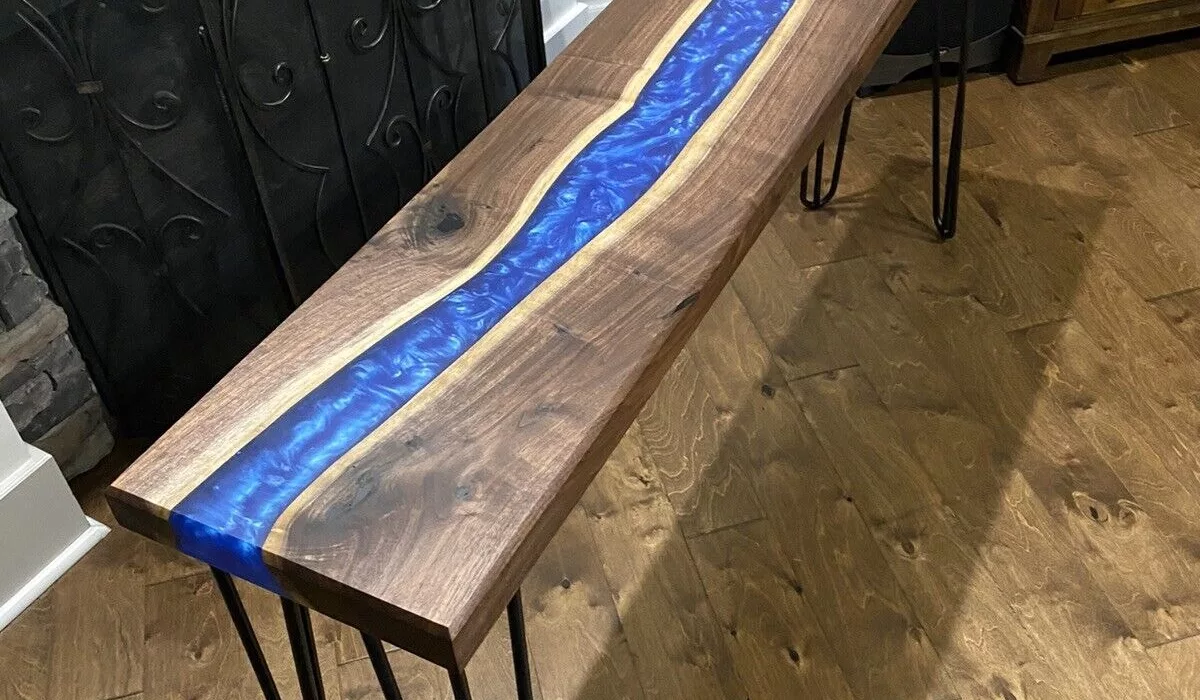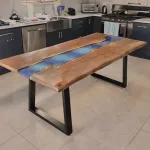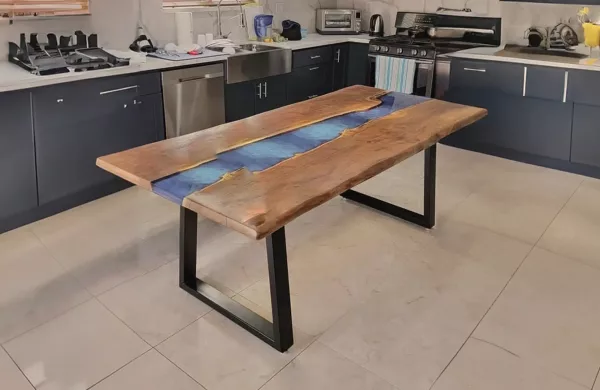
Epoxy has become a popular material in various applications ranging from DIY projects to professional manufacturing due to its durability, versatility, and clear finish. Two common types of epoxy are “Table Top Epoxy” and “Epoxy Resin,” and while they share some similarities, they are designed for different purposes. This article delves into the distinctions between table top epoxy and epoxy resin, exploring their characteristics, applications, and how to choose the right one for your project.
1. Definitions
Table Top Epoxy: This is a type of epoxy resin that is specifically formulated to coat surfaces. It is known for its thick, high-gloss finish that can protect and enhance the appearance of a surface. Table top epoxy is often used in bars, restaurants, and for home furniture projects like coating tables, bar tops, and countertops.
Epoxy Resin: Epoxy resin, in a broader sense, refers to a group of polymeric materials composed of two parts: a resin and a hardener. When mixed together, they undergo a chemical reaction that results in a hard, durable plastic-like material. Epoxy resin can be used in a wide range of applications, from adhesives and coatings to composite materials like carbon fiber and fiberglass.
2. Key Differences
- Viscosity: Table top epoxy is generally formulated to be thicker and more viscous than many other types of epoxy resin. This thickness allows it to self-level and form a smooth, glass-like finish that is ideal for coating surfaces. On the other hand, other epoxy resins may have a lower viscosity, making them suitable for applications requiring penetration into finer details or the reinforcement of materials where flow is necessary.
- Finish and Appearance: Table top epoxy is designed to cure to a very clear, high-gloss finish that enhances the appearance of the substrate it covers. It is UV stabilized to resist yellowing, making it ideal for applications where aesthetic appeal is important. Other epoxy resins may not have the same level of clarity or gloss, as their formulation may prioritize other properties like strength, flexibility, or chemical resistance.
- Cure Time: The cure time of table top epoxy is generally longer than that of some other epoxy resins. This slower curing process allows air bubbles to rise to the surface and pop, resulting in a clearer finish. However, this means that projects may take longer to complete when using table top epoxy. Other epoxy resins may cure faster, which can be beneficial in applications where time is a critical factor.
- Application Thickness: Table top epoxy can be applied in thicker layers compared to many other epoxy resins. This characteristic is beneficial for achieving a deep, glossy finish with a single pour. In contrast, other epoxy resins may require multiple thin layers to build up thickness or are used in applications where a thick layer is not necessary.
3. Choosing the Right Epoxy
When selecting between table top epoxy and other types of epoxy resin, consider the following:
- Project Requirements: Think about what you need from the epoxy. If you’re looking for a durable, glossy finish for a table or countertop, table top epoxy is likely the best choice. For bonding, filling, or laminating, a different type of epoxy resin may be more suitable.
- Working Conditions: Take into account the environment in which you’ll be working. Factors like temperature and humidity can affect epoxy’s curing time and final finish.
- Safety Precautions: Always follow the manufacturer’s safety guidelines for working with epoxy, including using appropriate protective gear.
4. Conclusion
Table top epoxy and epoxy resin are versatile materials with a range of applications. Understanding the differences between them can help you choose the right product for your project, ensuring durability, aesthetic appeal, and functionality. Whether you’re coating a new bar top or repairing a boat, there’s an epoxy solution that can meet your needs. Always consider the specifics of your project and the properties of the epoxy to achieve the best results.








